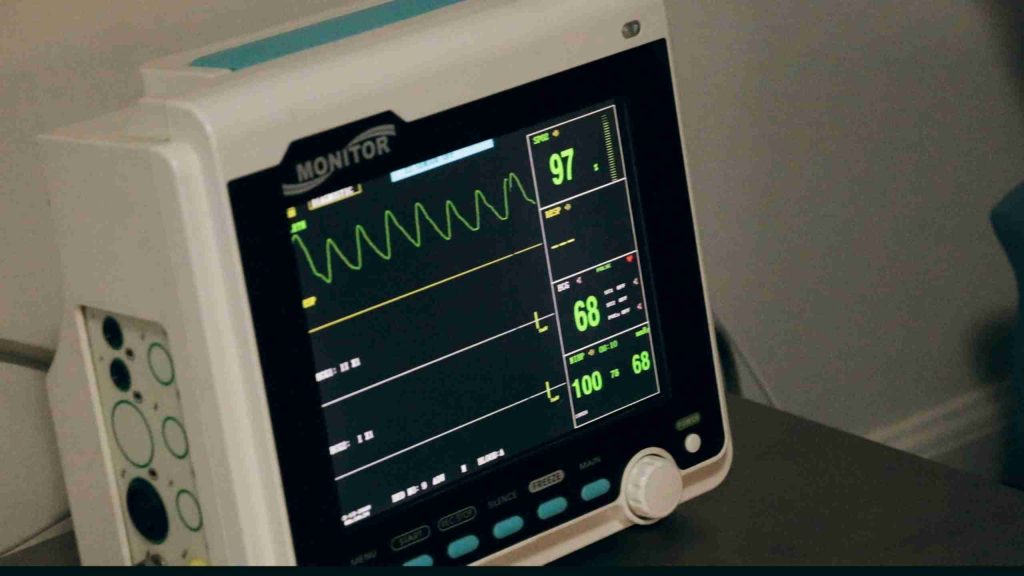Managing firmware projects is fundamentally different from managing traditional software projects. While both disciplines require technical expertise, planning, and coordination, firmware project management introduces unique challenges due to its deep integration with hardware, higher risk profile, and the multidisciplinary skills required.
This guide examines how the firmware development process diverges from standard software practices, explores the impact of modern firmware tools, and outlines what project managers must do to optimize firmware projects for today’s embedded systems development landscape.
Embedded Systems Development: Creation, Not Production
Embedded systems development is not a production line. The work is creative, not repetitive. Some tasks echo past projects and move quickly; others stall because the variables are new. Firmware teams do not crank out code like consumer goods. They invent. The process is unpredictable and always multidisciplinary.
Human-Centered Project Management
Bad management derails projects. The “death march”—weeks of late nights and weekends—often stems from management habits rooted in Taylorism, or scientific management. Frederick Winslow Taylor’s early 20th-century theory broke work into simple, repeatable tasks, timed every step, and pushed for maximum efficiency. Taylorism worked for factories: managers planned, workers executed, and anyone who couldn’t keep up was replaced. The focus was on output, not creativity or problem-solving.
In firmware projects, Taylorist thinking shows up as command-and-control: timing tasks, pushing for speed, setting unrealistic deadlines, treating engineers as interchangeable parts. Leadership expects teams to “work harder” to make up for lost time, ignoring the unpredictable, creative nature of embedded development. This approach burns out teams and drives away talent. It leads to missed deadlines and erodes morale, health, and retention. Embedded engineers need autonomy, they innovate when given time and space. Most are self-motivated and results driven.
Pressure does not yield better results. It burns out the best people and leaves the rest disengaged.
Creation & Invention vs. Production
The fundamental flaw in Taylorist thinking is the assumption that embedded systems development is a repetitive task. It is not. Embedded development is product creation and invention, not production. Humans are not code-producing machines. They do not crank out lines of code predictably like a production line cranking out consumer goods. Creation is inherently complex and variable. Some parts go smoothly because they’re similar to past work; others do not because of differences and unknowns. It’s the invention of a new thing, not the replication of the same thing by the thousands.
Production lines manufacture the same item repeatedly. Embedded system development leads to products that can be produced on a production line; however, getting to that point involves a fundamentally different process.
Risk Management and Margin
Every project has risks. Ignoring risk is a hallmark of inexperience. Even careful, rested engineers make mistakes. Margin is not optional. Schedules must absorb the unexpected. Firmware teams build margin into MCU and memory budgets—project schedules need the same buffer. Not every risk will materialize, but some will. The world does not conform to the model. Teams that fail to plan for risk pay for it in rework and missed launches.
Modern teams address risk head-on. They identify the riskiest items and unknowns early. They do not leave the hard tasks for last. They maintain a risk register—formal or informal—and update it regularly. They respect their people’s time, communicate expectations clearly, and build schedules that accommodate setbacks.
Teams succeed when management trusts them to deliver without manipulation.
Technical Skills: The Cross-Discipline Non-Negotiables
Hardware Skills
Hardware expertise is fundamental to embedded development. Teams need to read schematics, understand datasheets, and design functional layouts. Measurement with oscilloscopes and logic analyzers is a standard practice. Troubleshooting hardware issues is routine. Familiarity with MCUs, memory systems, and communication interfaces is required. Hands-on experience with development kits is valuable. Modern logic analyzers are compact and cost a fraction of their predecessors.
Software Skills
Software demands proficiency in C, C++, and increasingly Rust. Scripting in Python, Ruby, or Bash is expected for automation. Data structures, algorithms, and memory management are not optional. Mastery of source control, especially Git, is assumed. Debugging with GDB and vendor tools is a standard practice. Security is not an afterthought—it is the first principle, security-first software design is now the baseline. This marks a significant shift from historical approaches.
Testing Skills
Testing has evolved from manual processes to comprehensive, strategic approaches. Test-driven development, integration testing, hardware-in-the-loop (HIL), security and penetration testing, performance and resource utilization testing, and environmental testing for temperature, pressure, and EMI are all standard. Embedded systems often operate in challenging environments—such as aircraft, underwater, or embedded in concrete —and run for years without maintenance.
DevOps for Embedded
DevOps is now standard. Automated CI/CD pipelines, Docker environments, release management, and security scanning are part of the workflow. The goal is to produce a release candidate in an hour, not a week. Tools like EmbedOps connect Git, Docker, test frameworks, and cloud infrastructure. Teams automate builds, tests, and releases without custom scripts for every project.
Cross-Disciplinary and Soft Skills
Modern embedded developers need “engineering mindset” skills: mapping between hardware and software, reading and understanding schematics and software; analytical thinking; scientific method; problem bisection; root cause analysis. The art is being able to bridge the gap from theory to the applied, in the physical world.. Soft skills matter: empathy, humility, effective communication, providing constructive feedback, time management, maintaining deep focus, knowing when to ask for help, understanding customer needs, continuous learning, patience, persistence, and tolerance for failure.
Team Building and Skill Development
Not every project needs every skill, but gaps lead to failure. Build teams with hardware and software expertise, QA, DevOps, problem-solving, and communication skills. Adaptability and a learning mindset matter. Foster skill development with hands-on experience, experimentation, cross-training, open-source participation, and ongoing education. Technology never stands still, neither should your teams, they must keep learning throughout their careers.
Firmware vs. Software Project Management
Firmware project management is fundamentally different from software project management. Firmware is tightly coupled to hardware, and mistakes can render a device unusable or necessitate a field recall. The cost of error is high. Updates are rare and risky. Software projects, by contrast, can usually patch bugs after release. The flexibility is higher, and the consequences of failure are usually less severe.
| Aspect | Firmware Project Management | Software Project Management |
| Flexibility | Low; hardware ties, high cost of error | High; easier to iterate and fix |
| Schedule Margin | Essential; must account for unknowns | Less critical; more adaptable |
| Update Frequency | Rare, high risk | Frequent, low risk |
| Regulatory Burden | Often high (medical, automotive) | Usually lower |
| Time to Market | 2–3 years typical | 1–1.5 years typical |
| Testing | Hardware-in-the-loop, environmental, manual, certifications | Simulated, automated |
| Lifecycle Management | Critical, must plan for device EOL | Routine, less risky |
| Security | Must be built-in from start | Can be patched post-release |
Modern Firmware Tools
Modern firmware tools enable reproducible builds, robust testing, and efficient collaboration with software teams. Automated CI/CD, containerized environments, version control, and security scanning are now baseline requirements. Tools like EmbedOps integrate these capabilities, eliminating the need for custom scripts and manual intervention.
Optimizing Firmware Projects
Optimization means more than code efficiency. It means building multidisciplinary teams, investing in modern tools, prioritizing security, managing risk proactively, and fostering a culture of learning. Teams that succeed do not rely on outdated management models. They communicate effectively, plan thoughtfully, and continually improve.
Firmware project management also demands an ongoing commitment to skill development and organizational learning. Teams must stay ahead of evolving hardware, security requirements, and testing methodologies. Encouraging engineers to gain hands-on experience with new development kits, experiment with hardware configurations, and participate in open-source projects strengthens both individual and team capabilities.
Cross-training between hardware and software specialists builds resilience and adaptability, while continuous education ensures the team can respond to new challenges in embedded systems development. The most successful organizations foster a culture where learning is continuous and failure is viewed as an opportunity to improve, rather than a setback. Investing in these areas directly supports the optimization of firmware projects, reduces risk, and accelerates time to market.
From Theory to Practice
Modern embedded development blends technical expertise, cross-disciplinary understanding, and soft skills. Recognizing these needs helps project managers build stronger teams, identify gaps, and deliver successful projects. Third-party specialists bring technical breadth and established processes, helping organizations navigate complexity and focus on core goals. Fundamental best practices remain: clear communication, planning, and continuous improvement. Combine these with a deep understanding of embedded development, and projects succeed.
Firmware project management is not just a variant of software management—it is a distinct discipline that requires its own strategies, tools, and mindset. Project managers who recognize the differences in the firmware development process, leverage modern firmware tools, and build multidisciplinary teams, will be best positioned to deliver robust, secure, and innovative embedded solutions.
As the boundaries between hardware, software, and firmware continue to blur, now is the time to evaluate your team’s capabilities and processes.
Take action:
- assess your current approach to embedded software project management
- identify gaps in skills or tools
- invest in the resources that will help you optimize your next firmware project for long-term success
Next Steps
If you’d like to discuss having Dojo Five help you with your embedded project, you can book a call with our team. And if you’re a firmware engineer who works on devices, you should check out our EmbedOps platform.





